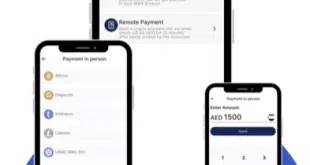The question of payments strategy is separating those institutions whose payments business will grow from those whose payments business will shrink. Three things have changed that payments strategies have to deal with. One obvious change is payments itself. The second is how banks are reorganizing themselves to meet the changing payments market. The third is how strategists conceive of their customers’ futures.
New payments are de-coupling the making of a payment from the payor’s awareness of it being made. When your car pays for parking by itself or your home pays the electricity bill on its own; or when your coffee is paid for by your wristwatch and you barely notice it; or when your taxes are paid by an expert system you downloaded years ago and forgot about, something important vanishes: customers’ recognition that it is their bank or credit union that is providing the technology, the regulatory compliance, and the know-how that enables the payment to be made.
The second change is the way some financial institutions are reorganizing themselves because they recognize that having silos labeled “Payments” or “Technology” or “Lending” no longer makes sense.
Payments product and management people need to be as tech-savvy as any Millennial working from her beanbag chair at a digital incubator. Bank-technology managers need to know how to infer from what’s on a customer’s social-media site that she needs to send foreign remittances. Lending executives need to see that online lenders present an object lesson in how providing easy and instant ways to pay the loan helps to sell the loan.
Branch managers who unconsciously picture a branch as a building need to learn to also picture it as an app so they’ll understand what has happened when the day comes that no one walks through the door.
How can a new way of doing payments strategy show us how to manage all this? It starts with building a strategic plan not for a line of business or for a management function or for a delivery channel, but rather for the customer.
We gain insight by seeing the customer as linking the bank’s silos because the customer doesn’t care how we organize our bank. Customers care that when they text a payment on a Sunday or tweet a question at 11 at night, their financial institution will respond quickly as a cohesive unit with an acknowledgement, an answer, or a suggested product. And do it all as part of a single interaction, in real time, with a single person or smart device at the bank meeting the needs of a customer who has reached out.
Financial institutions are learning to do business this way through a new kind of strategic planning that puts a dozen executives from all parts of the institution in a room with three customers and a facilitator to develop strategies that actually are strategic in the customer’s eyes, not just the bank’s. Consultants using this strategic-planning approach are helping bankers to de-silo their institutions and organize around the customer. We are seeing big improvements in account retention, more products sold per customer, higher payments-product usage, lower costs, and stronger revenue.
Trying to discern the future of payments is a fool’s errand simply because the future doesn’t exist yet. So there’s nothing to study. Strategic-planning techniques have been developed, however, that provide a way to influence the future by being in the present with your customer and seeing the world as she sees it, and then applying to her future the bank’s knowledge of how it can help her prosper in her world. It’s new. It works. And it’s helping credit unions and banks compete against non-bank payments.
Reimagining our payments products, organization, and technology to meet how our customers see the world and their future can be modeled in the laboratory and processed in facilitated customer-centered workshop sessions. This produces insights from which to build strategic plans that provide clear guidance to bank management about how to be in our customers’ futures with the products they need, delivered through the media they prefer.
The fact that they may not care that it is a bank that brings them what they need isn’t really such bad news. If they know what brand it is coming from, they’ll know where to come back for more.
— George Warfel • GWarfel@haddonhillgroup.com




